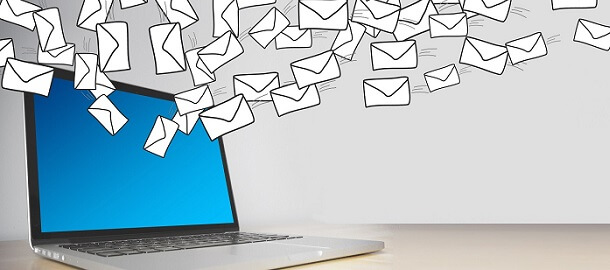
It’s a great feeling when you can get all your work done with time to spare, especially when it comes to email. Yet email problems are common among workers, with most professionals losing hours every day to overflowing inboxes.
Everyone would like to be more productive when it comes to email. The question is: What’s holding you back?
If you’re like most people, multiple factors are impacting your ability to achieve sufficient email productivity success. It could be that your process is lacking efficiency, that your inbox is overflowing, or that you’re not using the right tools.
Luckily, most email problems like these are fixable. Here’s how to troubleshoot your email overload woes, with email efficiency tips and tools that will help save you time and get more done.
3 Challenges of Email Productivity
Lots of things can hold you back from email productivity, but there are 3 common challenges that stand out from the rest:
- Procrastination
- Distractions
- Time management
If you are having trouble getting through all your emails, the first thing to check is your process — and procrastination, distractions and time management issues all have to do with the process of how you work on your inbox.
It’s important to identify if these issues could be a factor impacting email efficiency for you and think about ways to address them. Consider each one.
1. Procrastination
If you struggle with email procrastination, congratulations, you’re human! It’s completely normal to find it difficult to dig into work that is oftentimes unpleasant. But in order to achieve better email productivity, you’ll need to examine your procrastination habit and work to change it.
It can really help to figure out why you’re procrastinating. There are a broad array of reasons you may feel like procrastinating on your email. It could be that:
- It’s boring. Perhaps the tasks you need to do don’t require much thought and it seems like a waste of time to be doing them.
- It’s ambiguous. You may know that these emails are important, but you don’t have a clear process for how to handle them.
- It’s not urgent. You may be working on items that don’t have a pressing deadline or play an important role in company decisions.
- It’s high stakes. At the other end of possibilities, sometimes we procrastinate when we’re worried about failure when it really counts.
Identifying the reasons for your procrastination is important for finding a way out of procrastination and into better productivity.
See how you can take action. If email work is boring, you may be able to implement email automation. If a workflow is ambiguous, seek clarity. If work isn’t urgent, plan to do it when you’re less busy. If it’s high stakes, prioritize it so that you can give yourself the best chance for success.
2. Distractions

Distractions also have a huge impact on work productivity. Outside of procrastination, it’s the biggest issue affecting email productivity. One study even reports it takes more than 23 minutes to recover your focus and get back in the swing of things after a distraction.
Overcoming this email problem is going to require an examination of the distractions impacting your work. Try using a time tracker for a week or two to see where your time is going.
You’ll likely discover that there is more than one kind of distraction.
- Unavoidable distractions do happen and it’s something you simply have no control over. However, these distractions are generally less common than the ones you can manage.
- Noise can be very distracting, but there are solutions, such as headphones, asking coworkers for quiet time or rescheduling when you tackle certain focus-heavy tasks.
- Interruptions are another big distraction. Manage these by trying to schedule your email time when there are fewer customers and phone calls, or silence alerts and notifications.
Distractions will always happen, but the impact will be much less when you begin properly managing them.
3. Time Management
Managing time is another big challenge a lot of people struggle with. We all have the same number of hours in a day. Everything you need to do, including email, will have to be done in that time frame.
Solving your email problems can only happen once you start managing your time more efficiently. There are a number of controls you can start putting in place to improve your time management, such as:
- Using a calendar for scheduling. Calendar tools can help you organize your day, avoiding many of the problems that eat into your email productivity.
- Keeping a to-do list. Use one of the many available to-do list methods to get through more work so you’ll have more time for email.
- Setting goals and objectives. Having clear goals for each work day and week is a useful strategy for improving your email efficiency.
- Pacing your work day. Manage your time so you don’t end up trying to tackle too many things in the morning or leaving too many tasks for the afternoon
- Using tools to help you save time. Technology is there to help and the right time management tools can be a lifesaver for busy people.
Tactics like these can make a big difference. If you are able to improve your process, it can quickly translate into better email productivity.
5 Questions to Further Improve Your Email Productivity
If you’ve worked out process-related issues such as procrastinating, getting distracted and managing your time but are still dealing with email overload, you may have some more work to do to solve your email productivity problems.
It can help to narrow down your focus, since the problem might have to do with how you are working through your inbox. Start by asking yourself some questions about your email efficiency.
1. When Are You Checking Messages?
Checking messages first thing in the morning seems like a good idea, and most people do it. But it can also lower productivity. So does checking messages frequently throughout the day.
Instead try checking your inbox only two or three times a day using dedicated time blocks, such as 10 a.m., 1 p.m. and 4 p.m. It’s one of the most unusual email efficiency tips, but also one of the most effective.
You can also add these time blocks to your calendar so you won’t use them for anything else. While it may take some getting used to, handling email in batches turns out to be more efficient for most people.
2. How Do You Use Your Email Client?
It may seem silly to question how you use your email program. After all, everyone knows how to use Gmail and Outlook and there’s probably nothing unusual about how you’re operating the program. However, if you’re keeping the email window open all day, you could be hurting your productivity.
Consider only opening your email program when you intend to work through your inbox — and close it when you’re finished and it’s time to move on to other tasks. It will improve focus and minimize distractions.
3. How Do You Respond to a Notification?
Along with checking messages throughout the day and keeping your email window open all day, it can be inefficient and even disastrous for email productivity to let new message notifications distract you every time they pop up.
Instead, try turning off email notifications when you’re not working on email. You won’t have to worry about a new notification you won’t be able to get to until your next email block, and you won’t be distracted from what needs your full attention now.
4. How Do You Answer an Email?
Proper email etiquette recommends typing out a full reply under certain circumstances, such as when you don’t know the recipient well and when the subject matter concerns a new topic. But not all emails need such a thorough response.
A short reply works fine in a lot of cases. You might even try out Google’s Canned Responses feature that lets you reply with auto-generated email responses in just a couple of taps.
When longer answers are needed — but you’re repeating things you say a lot — an email productivity app that offers templates like TextExpander might be a good time-saving option.
5. What Do You Do When a Message Pops up?
One of the best tactics for managing email overload is to have a plan of what to do with your messages during an email session. These are 4 quick options that will work for most people:
- Delete any messages you know you don’t need or want to quickly cut out what’s unnecessary.
- Unsubscribe from mailing list emails you don’t have time to open and read or that send too many messages.
- Work through emails requiring action. Handle anything you can do immediately and add anything you can’t to your to-dos and archive the email.
- Archive remaining messages, moving them out of your inbox into one or more archives folders for reference.
These email overload solutions are a great start for improving email efficiency. For some professionals, it’s enough to fix your process and implement these email overload solutions. However, if you are still swimming in emails and running out of time to batch them, you may need to look for a technology solution that can automate some of your email workflows.
4 Reasons You Might Want to Try an Email Automation Tool

While it’s true that many people can see a dramatic improvement in their productivity with a few tweaks to their work processes and email workflows, it’s also true that some people just get a lot of emails.
If you are a professional who gets more than 100 messages per day, you still may struggle to find time to get through your inbox without the aid of technology.
Every manual click adds up, even when you’re a very efficient emailer, which is why you may want to try an email automation tool.
Automation works by handling your tedious tasks so you can focus on more important work. In terms of email, an automation tool can help you:
- Minimize email problems. The more little tasks you have, the more risk there is for error. The right tool can take care of organizing messages, forwarding important messages, and sending simple canned replies.
- Add consistency to your day. The problems of email distractions and lost focus can also be helped by automation. An automation app can keep inconvenient interruptions from throwing off your focus and hurting your productivity.
- Free up more of your time. The biggest benefit of having an app lend a hand and take care of some of your more tedious sorting and replies is time. The time you save can let you finish up early or get ahead for tomorrow.
- Reduce your level of stress. The use of an automation app can also help you reduce the anxiety that dealing with email overload can cause. Important tasks can be prioritized without worrying yourself over the small stuff.
If you think a lack of automation might be holding you back from reaching your email productivity goals, you might give Folio a try.
Folio is an email add-on that lives inside your Gmail or Outlook inbox, helping automate repetitive tasks, like organizing messages, filing away attachments and keeping up with due dates and status updates.
Folio uses AI-powered algorithms to overcome your email productivity challenges, organizing your email into workflows that make sense, while saving time and boosting efficiency.
Start your free trial of Folio today and see how an email automation tool can help you become more productive.
Who we are
We've built Folio: the first AI email assistant for professionals.
Folio plugs directly into your work email inbox and automatically organizes your email, giving you contextual access to all the information you need to increase your productivity in minutes.
We are a team of passionate product people and engineers that gets excited about solving complex processes and creating value for people.
We're a venture funded company backed by Accel Partners, Vertical Venture Partners, and other leading venture capital firms and angel investors such as Ash Patel and Jerry Yang.


